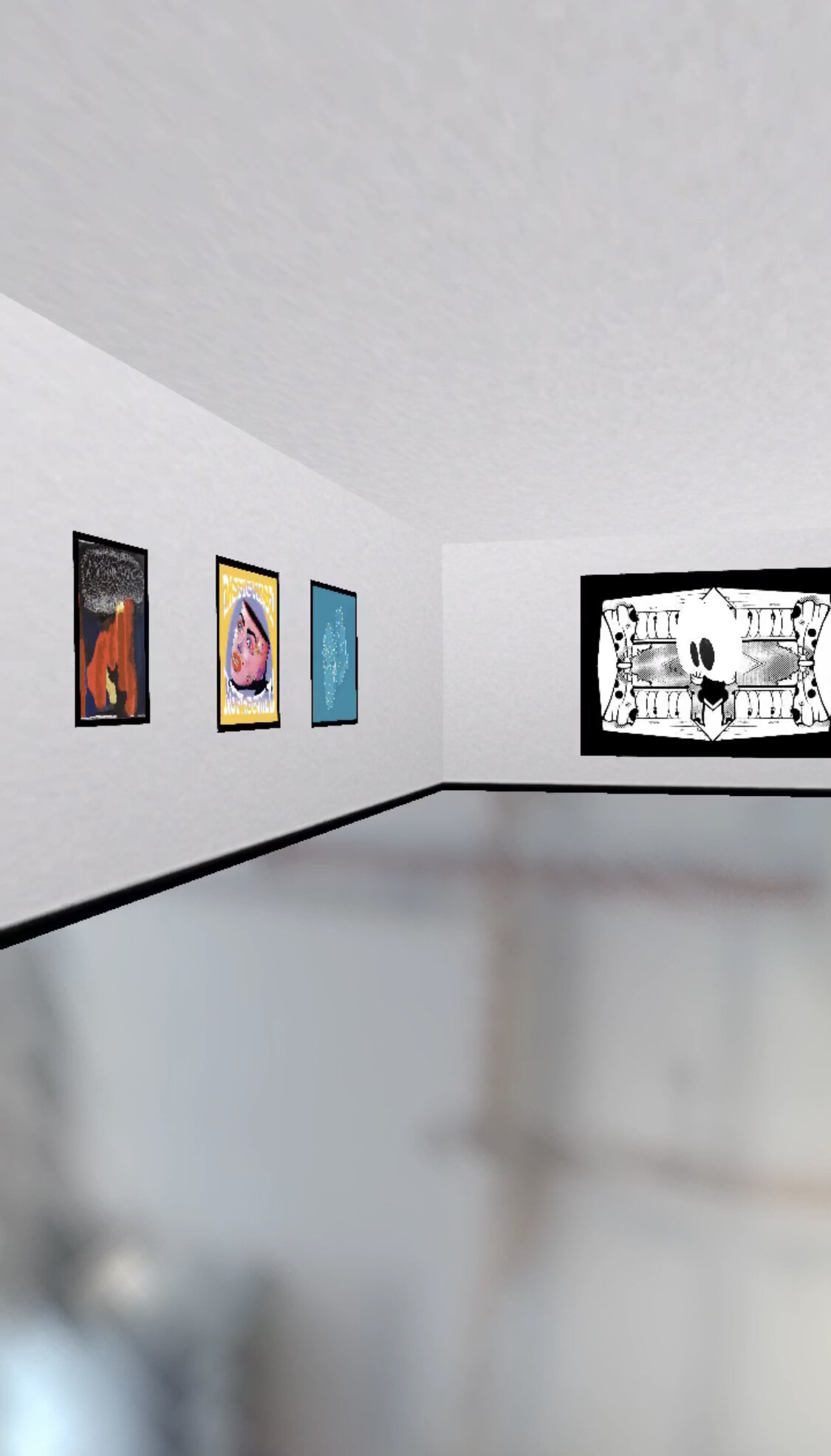'Seeing You, Seeing Me' / Isaiah Morris
Seeing You, Seeing Me is a group exhibition celebrating the dispersal and incongruity of ideas, concepts, objects and people hosted on Instagram. Unlike most exhibitions, though, it doesn’t take place in physical space.
There are no shoulders to rub against, no heads obstructing view of the works, no table littered with snacks, wine bottles and half-drunk glasses- unless that’s what your bedroom desk looks like. This white-cube gallery is situated where the virtual intersects with the real, superimposed via an Instagram filter onto your bedroom, your garden, or the confines of your state-sanctioned 5km radius. It is a hovering portal to both a nostalgic past (for those of us in Naarm/Melb- remember galleries!?) and a tech-infused future.
The exhibition features 7 visual and audio artists. The gallery filter is also accompanied by an ever-expanding body of new collaborative filters, released intermittently on the profiles of the artists: Aki Yaguchi (@akiyaguchi), Lotte Frances (@lottefrances), Brigid Stafford (@its.stripey), Elle Shimada (@elleshimada, DocG (@docg), Itgel (@1tgel), Ja_Keepitmoving (@Ja_keepitmoving) and curator Isaiah Morris (@isaiah_morris).
I’m not going to lie, it took me a bit of time to find my (metaphorical?) feet in the virtual realm. Navigating three-dimensional cyberspace poses more challenges than the accustomed two-dimensional scroll. For a little while the portal hovered tantalisingly (infuriatingly) above my head, until I worked out a technique to bring it down to my level (a tip: pinch to centre the portal, then drag two fingers downward to move forward). It felt a bit like learning to swim again- a maladroit attempt to move through a weightless substance without the grounding force of gravity.
Upon entering the portal, DocG’s work is the first to (literally) jump out at me. A set of floating googly eyes rotates slowly in front of a bold, cartoonish distortion of a window. These eyes and the disorienting symmetry of DocG’s work (where arrows point in conflicting directions, like Dory in Finding Nemo) are reminders that even though this projection might take the familiar form of a white-cube gallery, it doesn’t play by the same rules.
Digitisations of paintings line the walls, each vying for different aspects of my attention- a clamour characteristic of the Insta feed. To Elle Shimada’s bouncing, whispering soundtrack, Lotte Frances’ intriguing, layered forms hover on the periphery of recognition. Next to them, in 1tgel’s work, the words “disfigured reflection” frame an unnerving, glazed-eyed cranium. On the opposite wall, Ja_keepitmoving’s gritty monochrome distortions are situated alongside the hyperreal colours of Brigid Stafford’s vibrant vases and figures, and Aki Yaguchi’s smooth, sugary imagery. Beyond the “walls” of the “gallery” I can see my own space, my bed, my desk, my plants.
In the absence of crowds, and gravity, I move along a trajectory determined only by my own will and preferences. This solipsistic vision is the blessing and the curse of social media- a space which lets us share and connect, but also confines us to our own private galleries. Instead of being curated by a real life human (e.g. Seeing You, Seeing Me curator, Isaiah Morris), though, our usual streams of visual information are manipulated by the ubiquitous (and often creepy af) algorithm. It is increasingly difficult to identify where we end, and the technology begins.
As we fuse with our digital selves it is easy to be naïve to, or cynical about, the potential dangers of the digital space and its tendency to facilitate withdrawal and increasing division. Seeing You, Seeing Me is neither overly optimistic nor defeatist about the strange new reality we inhabit. There are inherent dangers but also huge potential, and a choice to use digital media to the advantage of innovation and genuine connection. As Isaiah puts it:
The notion of identity within contemporary culture is being shifted, the ‘tip of the iceberg’ has been disrupted, and we are now sifting through history, the positive and negative, rhetorical and allegorical. Our worlds have suddenly become solely online, crystal-clear identities formed via our social feeds, the virtue we signal and the content we consume. Yet we cannot even identify ourselves when we look in the mirror.
… I aim to see you, will you aim to see me?
Words: Ronlee Korren
Thank you for reading this article. Before you leave the page, we’d like you to take a moment to read this statement. We are asking our readers to take action and stand with the BIPOC community who fight and endure the oppression and injustice of racial inequality.
Here in ‘Australia’, Indigenous people are the most incarcerated population on Earth. Countless lives have been murdered by white police, white government policies and this country’s white history, institutionalised colonialism and ongoing racial oppression. Racial injustice continues today under the phoney, self-congratulatory politics of ‘Reconciliation’ and the notion that colonialism is something that must be denied and forgotten, an uncomfortable artefact of the past.
Feeling guilty is not enough. We must take action, pay the rent, educate ourselves and acknowledge that empathy and sorrow for past actions is insufficient if this does nothing to prevent our current reality from extending into the future.
Please consider making donations to the following organisations (the list is so small and the work to be done is so large, do your research to find more grassroots, Indigenous-lead community organisations):
Indigenous Social Justice Association - fighting to stop Indigenous deaths in custody
Firesticks Alliance - who campaign for Indigenous land management, cultural burning and looking after Country




